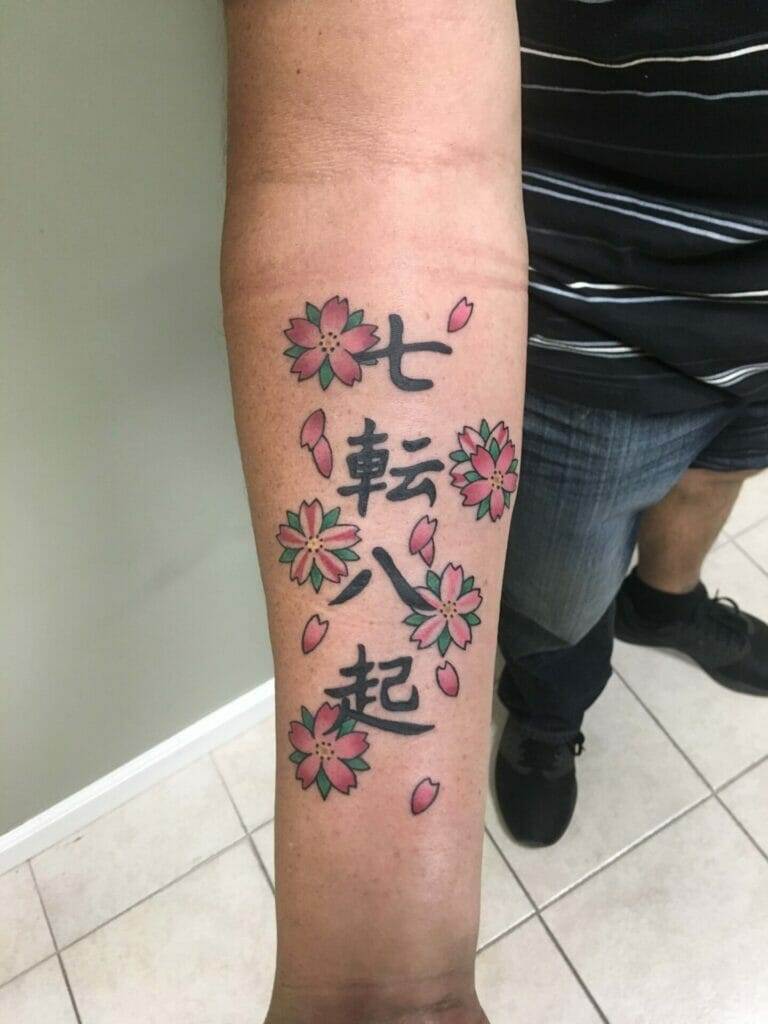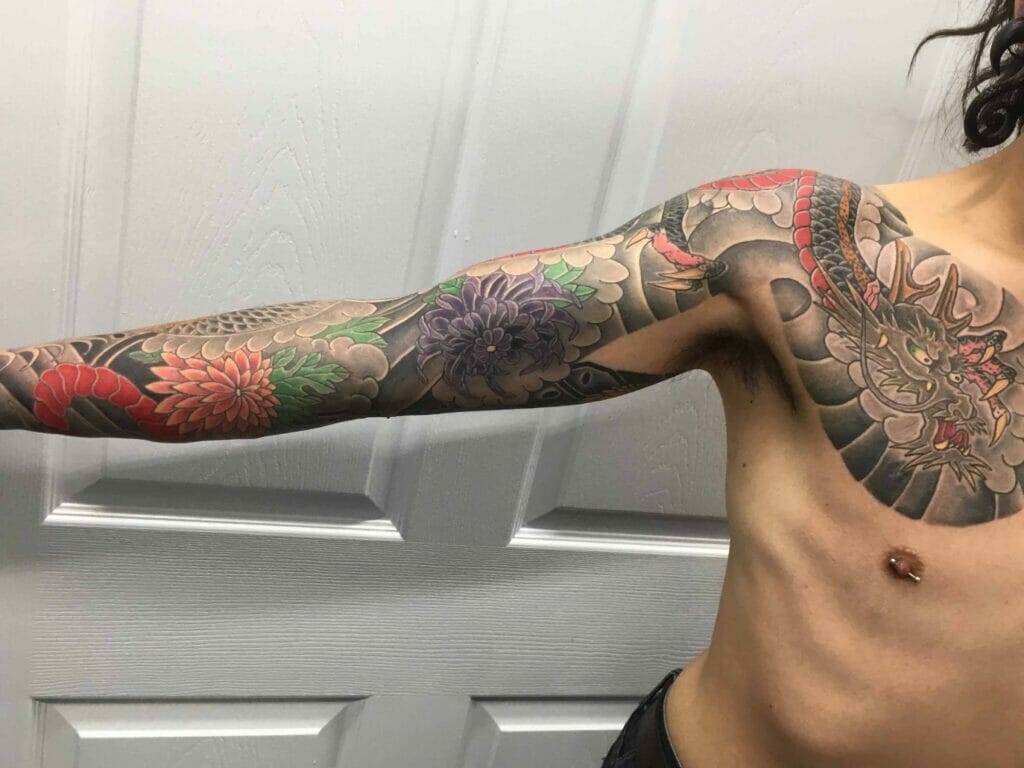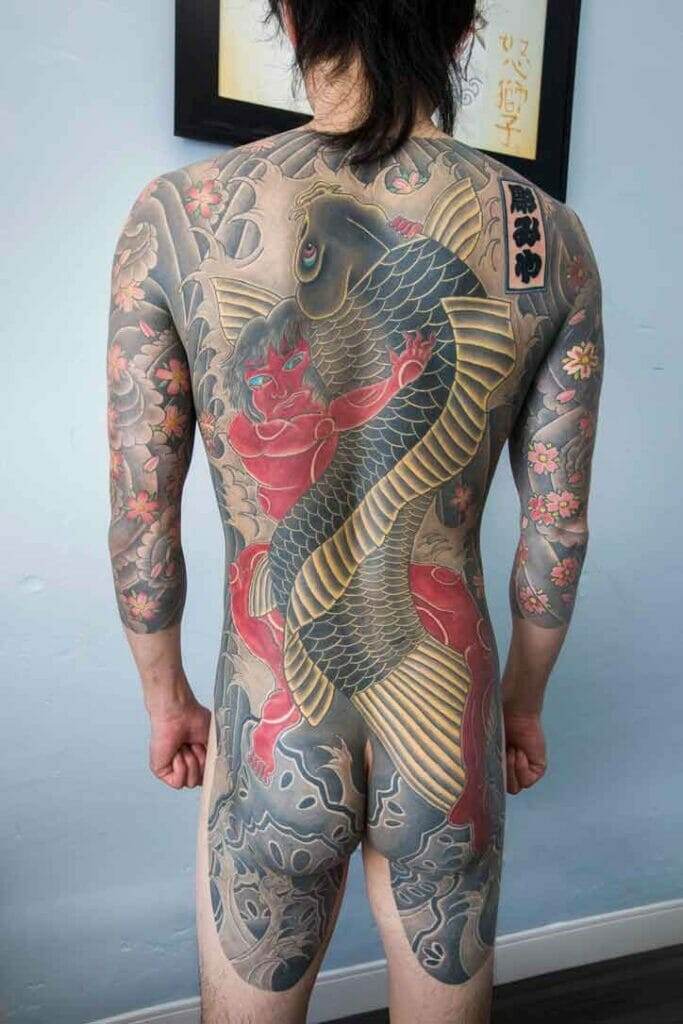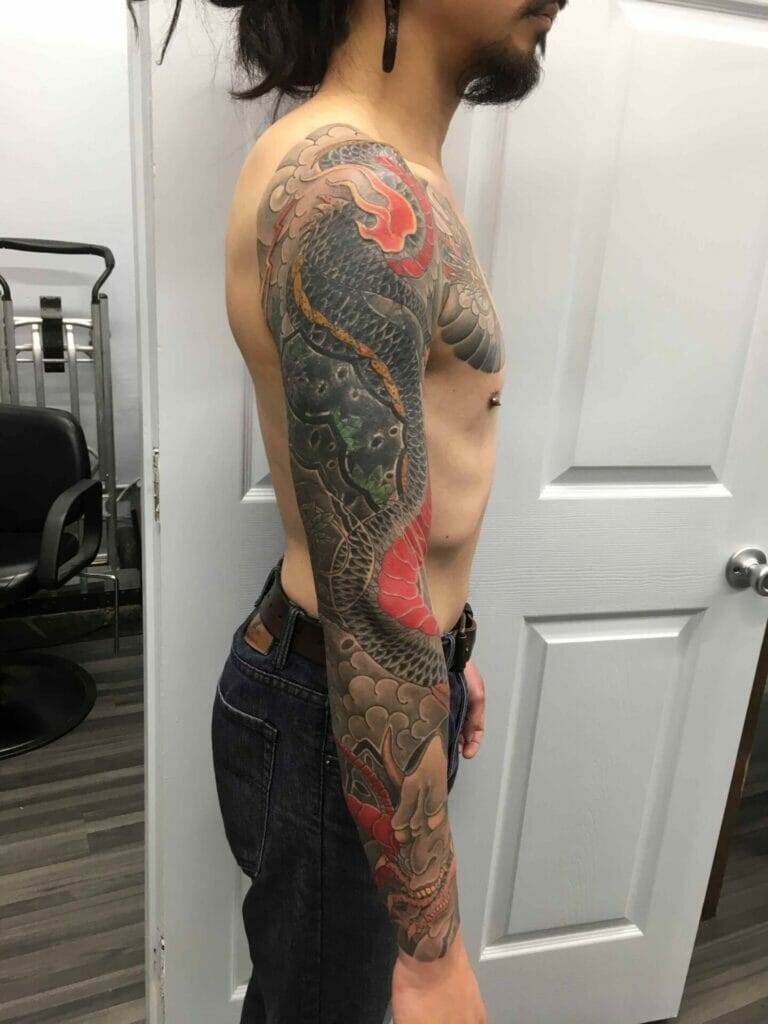Japanese tattoo artistry, also known as irezumi, has a rich and vibrant history that dates back thousands of years. It is a unique and intricate form of body art that has captivated people around the world. The popularity of Japanese tattoos can be attributed to their stunning designs, deep symbolism, and the skill and precision required to create them.
Japanese tattoos have gained a global following due to their striking visual appeal and the cultural significance they hold. The artistry and craftsmanship involved in creating these tattoos are highly regarded, making them sought after by tattoo enthusiasts and collectors alike. The intricate details, vibrant colors, and bold imagery make Japanese tattoos stand out from other tattoo styles.
The history and evolution of Japanese tattoos
The origins of Japanese tattoos can be traced back to ancient times. Tattoos were initially used for spiritual and decorative purposes, with evidence of tattooed bodies dating back to the Jomon period (10,000 BCE – 300 BCE). These early tattoos were simple designs made with natural pigments and were believed to offer protection and ward off evil spirits.
Over time, Japanese tattoos evolved and became more elaborate. During the Edo period (1603-1868), tattoos became associated with criminality and were used as a form of punishment. However, this negative association did not deter the practice of tattooing among the common people.
The influence of Japanese mythology and folklore on tattoo artistry is also evident in the evolution of Japanese tattoos. Mythical creatures such as dragons, phoenixes, and yokai (supernatural beings) are commonly depicted in Japanese tattoo designs. These motifs are often imbued with symbolic meanings that reflect various aspects of Japanese culture and beliefs.
The significance of traditional Japanese tattoo motifs
Traditional Japanese tattoo motifs hold deep cultural significance and are chosen based on their symbolic meanings. Each motif represents different virtues, values, or personal beliefs. For example, dragons symbolize strength, wisdom, and good fortune, while koi fish represent perseverance and determination.
Cherry blossoms, or sakura, are another popular motif in Japanese tattoos. They symbolize the transient nature of life and the beauty of impermanence. Cherry blossoms are often depicted in full bloom or falling petals, representing the fleeting nature of existence.
Choosing the right motif for a tattoo is crucial as it reflects the wearer’s personality, values, and aspirations. It is important to research and understand the meanings behind different motifs to ensure that the tattoo accurately represents the individual’s desired message or symbolism.
The art of irezumi: the Japanese tattooing process

The traditional Japanese tattooing process, known as irezumi, is a meticulous and time-consuming art form. It requires a high level of skill and expertise on the part of the tattoo artist. The process begins with a consultation between the artist and the client to discuss design ideas, placement, and size.
The tools used in irezumi include a wooden or metal handle with multiple needles attached to it, called a tebori. The tebori is dipped into ink and then tapped into the skin using a mallet or by hand. This technique allows for greater control and precision compared to modern tattoo machines.
Finding a skilled tattoo artist is crucial when getting a traditional Japanese tattoo. The artist’s knowledge of Japanese culture, mythology, and symbolism is essential in creating an authentic and meaningful design. It is recommended to research and choose an artist who specializes in Japanese tattoos to ensure the best possible outcome.
The role of symbolism in Japanese tattoo artistry
Symbolism plays a significant role in Japanese culture, and this is reflected in Japanese tattoo artistry. Each element of a tattoo design carries symbolic meaning, whether it be a specific motif, color choice, or placement on the body.
Incorporating symbolism into Japanese tattoo artistry allows individuals to express their beliefs, values, and personal stories through their tattoos. For example, a tattoo of a lotus flower may symbolize purity and enlightenment, while a tattoo of a samurai may represent honor and loyalty.
Popular symbolic tattoos in Japanese culture include the Hannya mask, which represents a jealous and vengeful female demon, and the Daruma doll, which symbolizes perseverance and good luck. These symbols are deeply rooted in Japanese folklore and mythology, adding layers of meaning to the tattoos.
The cultural significance of Japanese tattoos
Japanese tattoos have a long-standing cultural significance in Japan. Historically, tattoos were associated with criminality and were often used to mark criminals as a form of punishment. However, tattoos also held cultural significance among certain groups, such as the Yakuza (Japanese organized crime syndicates), where tattoos served as a sign of loyalty and belonging.
In modern Japanese society, attitudes towards tattoos have shifted. While there is still some stigma attached to visible tattoos, especially in more conservative settings, there has been a growing acceptance and appreciation for tattoo artistry as a form of self-expression and art.
The changing attitudes towards tattoos in Japan can be attributed to various factors, including increased exposure to Western culture and the influence of international tattoo conventions and exhibitions. Additionally, the younger generation in Japan is more open-minded and accepting of tattoos, leading to a gradual shift in societal perceptions.
The influence of Japanese tattoo artistry on modern tattoo culture
Japanese tattoo artistry has had a significant impact on modern tattoo culture worldwide. The intricate designs, bold colors, and attention to detail have inspired countless tattoo artists around the globe. Many artists incorporate elements of Japanese tattooing techniques and motifs into their own work.
The popularity of Japanese-style tattoos outside of Japan can be attributed to their visual appeal and the deep symbolism they hold. People are drawn to the beauty and complexity of Japanese tattoos, as well as the cultural significance they represent. Japanese-style tattoos have become a sought-after choice for individuals looking to make a bold and meaningful statement through their body art.
The fusion of Japanese tattoo artistry with other tattoo styles has also become increasingly common. Artists often combine elements of traditional Japanese tattoos with contemporary styles, creating unique and innovative designs. This fusion allows for a more personalized and individualized approach to tattoo artistry.
The controversy surrounding Japanese tattoos in Japan
Despite the growing acceptance of tattoos in Japan, there is still a negative stigma attached to visible tattoos, particularly in more conservative settings such as workplaces and public bathhouses. This stigma stems from the historical association of tattoos with criminality and the Yakuza.
People with visible tattoos in Japan may face discrimination and prejudice, as tattoos are often associated with delinquency or a lack of respect for societal norms. This discrimination can limit job opportunities and social interactions for individuals with visible tattoos.
Efforts are being made to change attitudes towards tattoos in Japan. Some businesses and organizations have relaxed their policies on visible tattoos, recognizing that tattoos do not necessarily reflect a person’s character or abilities. Additionally, there are ongoing discussions about the need for legal protections against discrimination based on appearance, including visible tattoos.
The role of gender in Japanese tattoo artistry
Gender has played a significant role in Japanese tattoo artistry throughout history. Traditionally, certain tattoo motifs were associated with specific genders. For example, dragons were often seen as masculine symbols, while cherry blossoms were considered more feminine.
However, attitudes towards gender and tattoos have evolved over time. In modern Japanese society, there is more freedom for individuals to choose tattoo designs based on personal preference rather than adhering to traditional gender norms.
The differences in tattoo styles for men and women are becoming less pronounced, with both genders embracing a wide range of motifs and designs. This shift reflects the changing attitudes towards gender and self-expression in Japan.
The future of Japanese tattoo artistry
Japanese tattoo artistry continues to thrive and evolve in the modern era. The demand for traditional Japanese tattoos remains strong, with many tattoo enthusiasts seeking out skilled artists who can create authentic and meaningful designs.
There is also potential for growth and innovation in the industry. As more people become interested in Japanese tattoos, there is an opportunity for artists to push the boundaries of traditional designs and techniques, incorporating new elements and styles into their work.
However, it is important to preserve the traditional artistry and craftsmanship of Japanese tattoos. The skills and techniques passed down through generations should be respected and upheld to ensure the integrity of this ancient art form.

the enduring beauty and power of Japanese tattoo artistry
Japanese tattoo artistry is a captivating and powerful form of self-expression. Its rich history, deep symbolism, and intricate designs have made it a highly sought-after style of body art around the world.
The enduring appeal of Japanese tattoos lies in their ability to convey personal stories, beliefs, and values through visual imagery. Each tattoo is a unique work of art that reflects the individual’s journey and experiences.
Japanese tattoo artistry has had a profound impact on modern tattoo culture, inspiring countless artists and enthusiasts alike. Its influence can be seen in the fusion of different tattoo styles and the growing acceptance of tattoos as a legitimate form of art.
As attitudes towards tattoos continue to evolve, it is important to recognize and appreciate the cultural significance of Japanese tattoos. Preserving the traditional artistry and craftsmanship ensures that this ancient form of body art will continue to captivate and inspire future generations.



